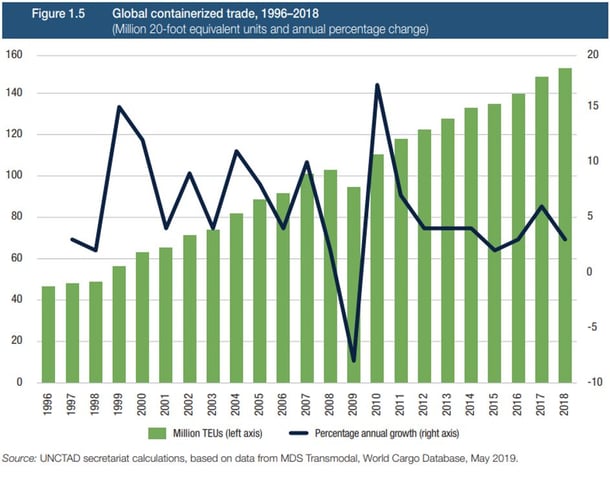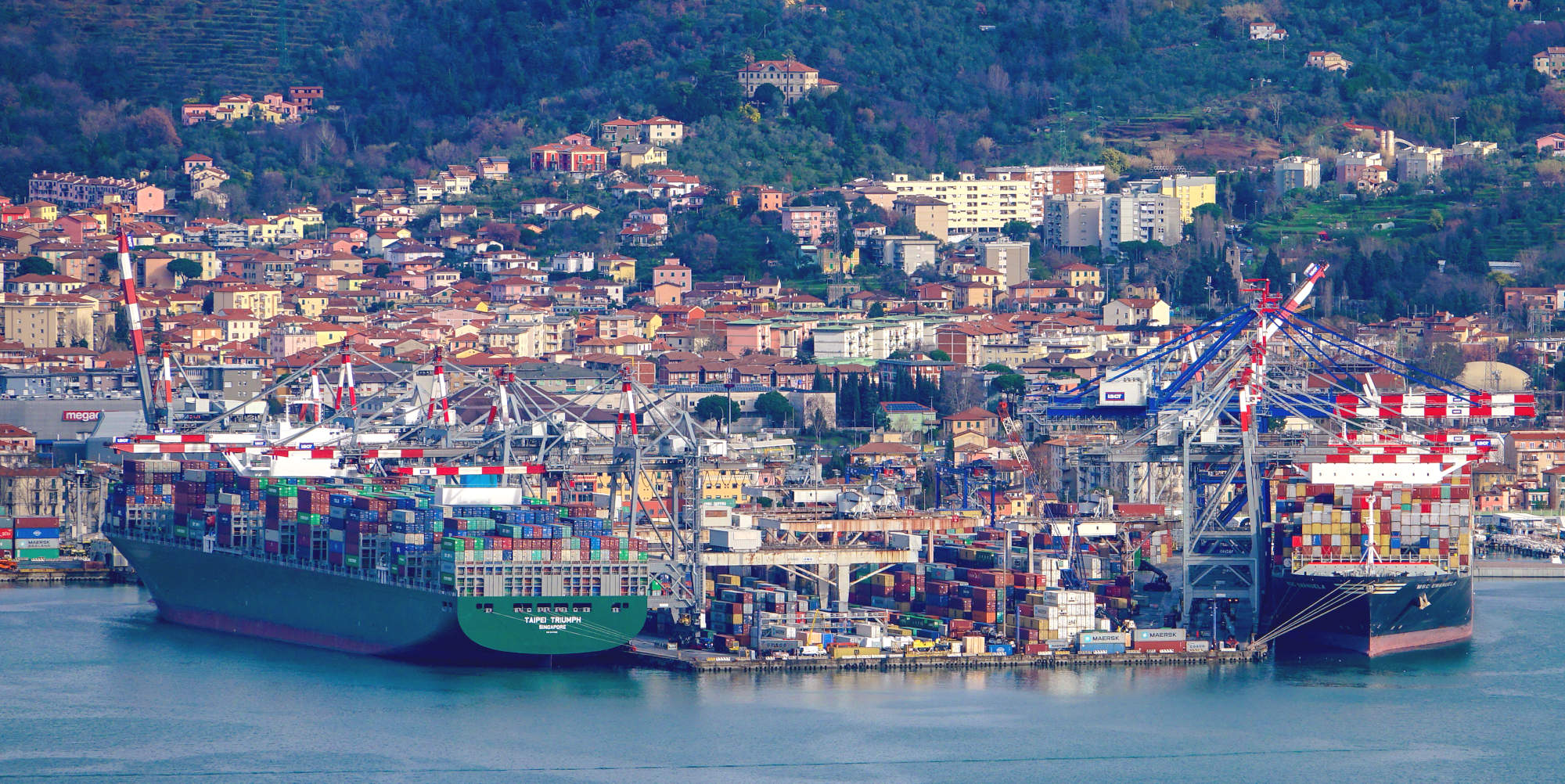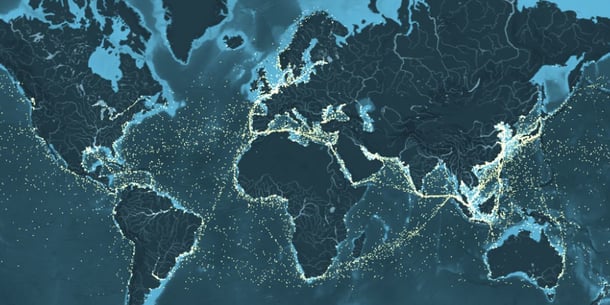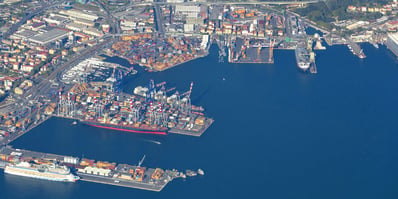Maritime transport is by far the most efficient modality for long-distance freight transport. In today’s hyper-connected world, where production, manufacturing and consumption centers are scattered on a global scale, large shipping companies provide intercontinental maritime services, transporting thousands of containers on each vessel, operating along the main routes, between Asia, Europe and the Americas.
The relevance of container traffic
Estimates suggest that 85 to 90% of products we consume and use every day arrives to us covering part of its journey on a container carrier. Besides intercontinental networks, on a regional scale we find a many smaller networks, formed by “feeder” services, linking regional ports among them, and with the largest hubs, where, through transhipment operations, containers are routed to and from other container terminals across the world.
We can consider all containerized maritime transport as a form of intermodal transport, because the first and last miles, connecting production and distribution centers with gateway ports, is covered by road, using trucks or trains. This combined transport modality, is today the norm, and is used for all the goods which do not require a very short transit time, which for long-distance shipments can be achieved only using air transport.
Massive economies of scale, made possible by ultra large container carriers, progressively reduced, year after year, the cost of transport per cargo unit and, consequently, the share of transport costs within the final price of many products. This process provided a remarkable contribution to the development of international trades, and can be considered one of the driving factors of the globalization trend, which characterized the world economy in the latest decades.
Volumes of containerized cargo traffic
Modern maritime transport is made possible by the cooperation between a number of different operators (shipping lines, freight forwarders, maritime and customs agents, terminal container operators, public institutions and auxiliary services suppliers) and by the adoption of shared standards and practices.
Today, this complex system is the backbone of international trade, and reached, decade after decade, an impressive size.
More than 5000 container carriers are today active in the world, and their combined tonnage exceeds 265 millions tonnes (source: statista.org).
To make an idea of the intensity of containerized sea transport activities, you can check out the website Shipmap, which shows in real time the position of active container carriers, as well as the main maritime services’ routes and all the main container terminals in the world.
Click on the image to visit shipmap.org
In terms of cargo units, the global container carriers fleet capacity surpassed the 23 million TEUs (Twenty feet Equivalent Units) mark in 2019 (source: Alphaliner).
According to the UNCTAD report “Review of Maritime Transport 2019”, global containerized trades accounted for more than 152 million TEUs, with a yearly average growth rate (in the last 20 years) of 5.8%.












.jpg)

.jpg)